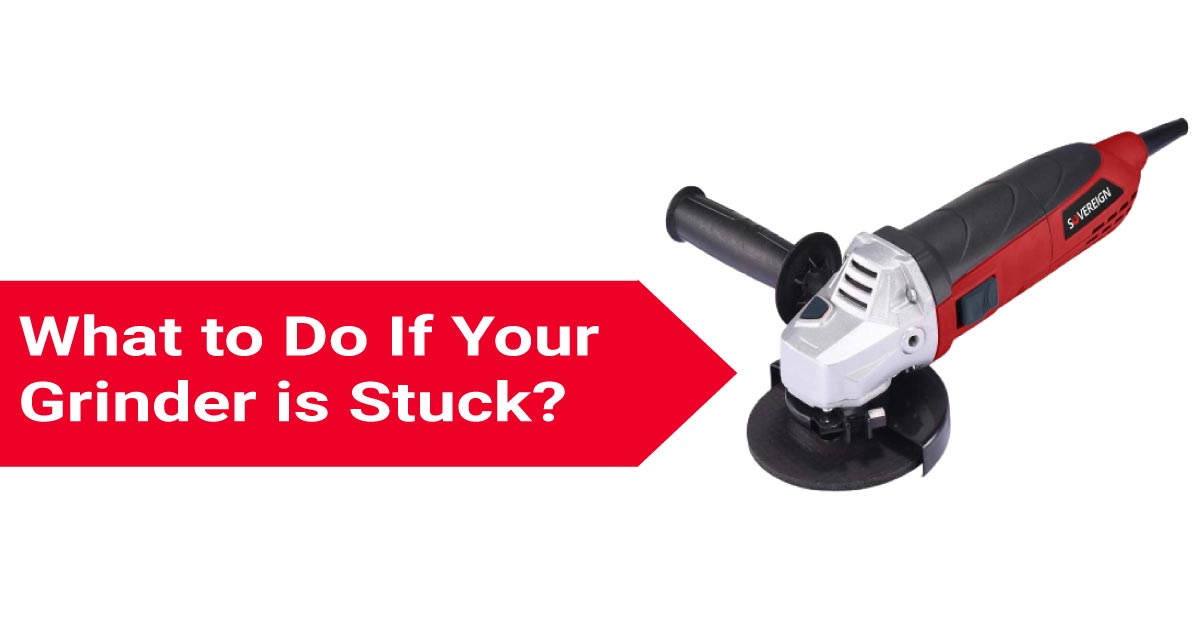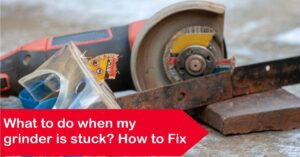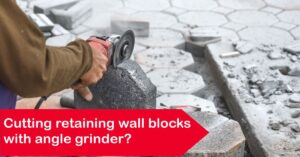Angle grinders are powerful and versatile tools that are commonly used in construction, metalworking, and other industries. They are designed to cut, grind, and polish various materials, including metal, concrete, and stone. However, like any power tool, an angle grinder can sometimes get stuck, causing frustration and potentially dangerous situations. So what to do if your grinder is stuck, let’s get answer in simpler way.
Angle grinder stuck can be caused by various factors, including a worn-out blade, overheating, or a mechanical issue. In this article, we will explore the common causes of the angle grinder stuck and provide step-by-step instructions on how to fix it. We will also share some tips for preventing angle grinders from getting stuck in the first place.
It’s essential to know how to fix a stuck angle grinder, as it can lead to injuries or damage to the tool. When an angle grinder gets stuck, removing the blade or disc can be challenging, which may cause the tool to spin out of control or even break. In some cases, it may be necessary to dismantle the grinder to fix the issue, which can be time-consuming and frustrating.
By learning how to fix an angle grinder that’s stuck, you can save time and money by avoiding needing professional repairs. Additionally, by taking steps to prevent angle grinder stuck from happening in the first place, you can extend the lifespan of your tool and ensure it continues to perform as intended.
Common Causes of Angle Grinder Getting Stuck
Angle grinder getting stuck can happen for a variety of reasons. The most common causes include a worn-out or damaged blade, debris buildup, or a faulty power source. Let’s take a closer look at each of these causes.
Several common causes of angle grinders getting stuck include blade wear and tear, overheating, and mechanical issues. Let’s take a closer look at each of these causes:
Blade wear and tear:
Over time, the blade or disc of an angle grinder can become worn or damaged. This can cause it to get stuck in the material being cut or ground. Additionally, using a blade that is not appropriate for the material being worked on can also cause it to get stuck.
Overheating:
Angle grinders generate a lot of heat during use; if they become too hot, they can get stuck. Overloading the grinder or using it for an extended period without allowing it to cool down can cause it to overheat. Using a grinder with a damaged or worn-out motor or bearings can also cause it to overheat and get stuck.
Mechanical issues:
Mechanical issues such as damaged gear or a stuck motor can cause an angle grinder to get stuck. These issues may be caused by wear and tear or damage from misuse or mishandling.
Improper use:
Misusing an angle grinder can also cause it to get stuck. For example, trying to cut or grind a material that is too thick or hard for the grinder can cause it to get stuck. Additionally, using the wrong blade or disc or using the grinder for a purpose it was not intended for can also cause it to get stuck.
Worn-out or damaged blade:
One of the main reasons for an angle grinder gets stuck is a worn-out or damaged blade. Over time, the grinder blade can become dull, chipped, or bent, which can cause it to get stuck. If the blade is worn out, it can’t cut through materials efficiently, and it may start to overheat, which can cause the angle grinder to get stuck.
Debris buildup:
Another common cause of an angle grinder being stuck is debris buildup. This can happen when the grinder cuts or grinds materials such as metal, concrete, or stone. The debris from these materials can accumulate in the grinder’s mechanism, which can cause it to get stuck. Debris buildup can also be caused by poor maintenance and cleaning of the angle grinder.
Faulty power source:
A faulty power source can also cause an angle grinder to get stuck. If the grinder is not getting enough power, it may be able to spin the blade fast enough to cut through materials efficiently. Additionally, a faulty power source can cause the grinder to overheat, getting stuck.
To fix an angle grinder that is stuck, it is crucial to identify the root cause of the problem. This will require some troubleshooting on the user’s part, as well as a basic understanding of how the grinder works.
Once the cause of the problem has been identified, there are several steps that can be taken to fix the issue. These may include replacing the blade or disc, allowing the grinder to cool down, or dismantling the tool to repair any mechanical issues.
Steps to Fix an Angle Grinder Stuck
If your angle grinder is stuck, there are several steps you can take to fix it. Here are the most common actions you can take:
Step 1: Turn off the power source
The first step to fix an angle grinder stuck is to turn off the power source. This will prevent any potential injury and damage to the tool. Unplug the grinder from the power source or remove the battery if it is cordless.
Step 2: Remove the blade
Once the power source is off, the next step is to remove the blade. To do this, you will need to locate the blade nut or flange on the angle grinder. Use a wrench to loosen the nut or flange and then remove the blade from the grinder. Make sure to wear gloves and eye protection when handling the blade.
Step 3: Clear any debris
After removing the blade, check for any debris stuck in the grinder. Debris can be removed using a brush or compressed air. Make sure to clean the grinder thoroughly and remove any debris from the motor, gears, and bearings.
Step 4: Inspect the grinder for damage
Inspect the angle grinder for any damage the stuck blade may have caused. Check for cracks, chips, or bent parts that may need to be replaced. If the grinder is damaged, it may be necessary to replace it.
Step 5: Replace the blade
If the blade is worn out, chipped, or bent, it will need to be replaced. Make sure to choose the correct blade for the type of material you will be cutting or grinding. Install the new blade onto the grinder, making sure to tighten the blade nut or flange securely.
Step 6: Test the grinder
Once the blade is replaced, test the angle grinder to ensure it works correctly. Turn on the power source and check that the blade is spinning smoothly and cutting or grinding as intended. If everything is working correctly, you can continue to use the grinder. However, if the grinder still seems to be stuck, a deeper issue may need to be addressed.
Preventing Angle Grinder Stuck
Prevention is always better than cure, especially when it comes to angle grinder stuck. Here are some tips for preventing angle grinder stuck from happening in the first place:
Tip 1: Perform regular maintenance
Regular maintenance on your angle grinder is crucial to preventing it from getting stuck. This includes cleaning the tool after each use, checking the blade for wear and tear, and inspecting the grinder’s motor and bearings for any signs of damage.
Tip 2: Use the right blade
Using the right blade for the job is essential to prevent angle grinder stuck. Choose a blade appropriate for the material you will be cutting or grinding. Using the wrong blade can cause the grinder to get stuck and potentially damage the tool.
Tip 3: Avoid overloading the grinder
Overloading the grinder can cause it to overheat and get stuck. Use the grinder within its specified limits and avoid pushing it too hard. If you have trouble cutting or grinding a particular material, try using a more powerful grinder or a different tool altogether.
Tip 4: Keep the grinder cool
Keeping the grinder cool is important to prevent it from overheating and getting stuck. Make sure to use the grinder in a well-ventilated area and avoid using it for long periods without giving it a break. You can also use cooling aids such as water or a cooling gel to help keep the grinder cool.
Conclusion
An angle grinder getting stuck can be frustrating and potentially dangerous, but it is a common problem that can be fixed with the right approach. In this article, we have explored the common causes of the angle grinders getting stuck, the steps to fix it, and how to prevent it from happening in the future. By following these tips, you can ensure that your angle grinder stays in good condition and continues to perform as intended. Always prioritize your safety when using power tools, and wear appropriate protective gear, such as gloves and eye protection.




